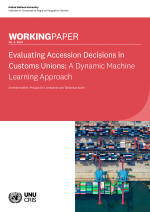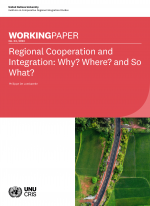Quantitive Monitoring and Comparison of Regional Integration Processes: Steps towards Good Practise
It is often taken for granted that regional integration processes are progressing and that the regional governance level is indiscriminately gaining importance worldwide, at least from a longer time perspective. However, both from an academic and policy perspective, a need is felt to monitor these processes more closely in order to be more precise with respect to their direction, speed and depth, and with respect to making cross-regional comparisons. This chapter deals with how to quantitatively monitor and compare regional integration processes using composite indices. In depth-studies of qualitative monitoring and the interaction between (regional) monitoring and (regional) policy-making in different regions in the world have been presented elsewhere. Regional integration is hereby understood as a complex and multi-dimensional process of societal change, including: (i) actors associated with the (sub-)national level(s) of governance, who increasingly interact at the (supra-national) regional level; (ii) their behaviours and policies, which are increasingly coordinated or unified at the regional level; and/or (iii) regional institutions being built up. In section two we start with a review of some proposals to quantitatively assess the course of regional integration processes. This will lead us in section three to problematize measurement and comparison and to suggest some guidelines and steps to be taken into account when building a (good) monitoring system, based on indicators. Section four concludes.



